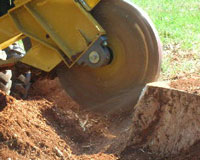Aphids are an insect that attack a wide variety of trees and shrubs. Aphids are commonly found on ash, elm, walnut, willow, cottonwood, aspen, apple, linden, snowball bushes, and many other ornamental trees and shrubs. Aphids first start to appear in spring to early summer, and can reproduce quickly depending on environmental conditions. An aphid population can increase in numbers very quickly.
Symptoms and life cycle
Aphids are tiny soft-bodied insects that are found clustered together on the leaves of trees and shrubs. The leaves may appear to be curled, thickened or discolored. Damage occurs when the aphid sucks the juices out of the leaves. Since aphids are unable to fully digest all of the sugars in the plant sap, they excrete the excess in a sticky liquid called “honeydew” which often drops onto leaves, branches, trunks, cars, sidewalks, patios, etc. A sooty mold may develop on the honeydew causing those surfaces to appear dirty. Ants feed on the honeydew and are often present in the areas where aphids are found.
Some aphids spend their entire life on one plant while others go from plant to plant. Aphids that hatch from over wintered eggs are wingless females that give birth to live aphids and can produce many generations throughout the summer. Some aphids are born with wings so that they can travel to less populated hosts. In the fall, the female aphid lays eggs in the bark for over wintering.
Control
Aphids should be sprayed at the first sign of an infestion. This should be done with a mild insecticide. A certified arborist can also systemically inject a tree to control the present generation of aphids or to provide season long control, which should be done in the spring of the year.
Repeat spray applications may be necessary as reinfestation can occur. A follow-up application may be necessary as spraying only controls aphids present at the time of application.


